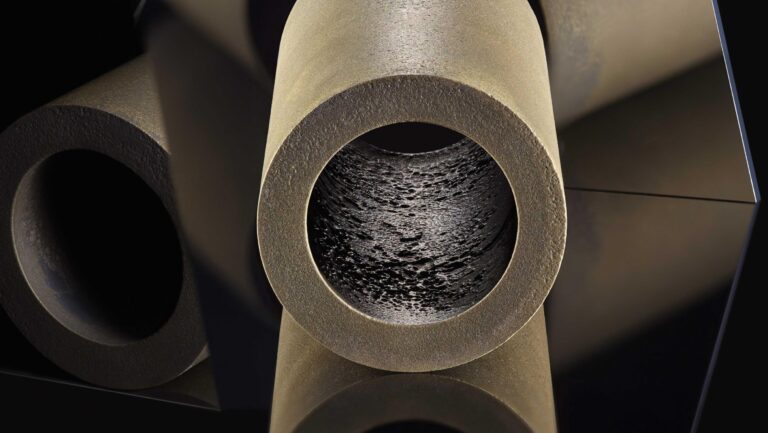Jamie Weiss
Metallurgy is an often overlooked aspect of watchmaking. For example, watch consumers may have a general understanding that most gold watch cases are made from 18 karat gold – meaning it’s not pure gold but is alloyed with other metals – but are rarely interested in what those other metals are. And while they may be vaguely familiar with the signature alloys of various brands, such as Omega’s Moonshine Gold, Rolex’s Everose, and Audemars Piguet’s Sand Gold, they probably don’t know what’s in them or what makes them special beyond the marketing claims.
Hublot is a brand that especially likes to promote its different materials. They have Black Magic Ceramic, King Gold, Texalium, Succeed, and Hubronium. Then there’s Magic Gold, which is perhaps the most interesting of Hublot’s materials, but it’s been getting less attention lately. In a world where Hublot and other brands are highlighting the uniqueness of their materials, Magic Gold gets lost in the noise.

In fact, I didn’t really know what was so special about Magic Gold until my Watches & Wonders visit to the Hublot factory in Nyon, Switzerland earlier this year. I had the unique opportunity to visit Hublot’s R&D department and see first-hand how Magic Gold is made, and even test its properties.


But before I get into my experience, you might be wondering what Magic Gold is. First introduced in 2011, Magic Gold is claimed by Hublot to be the world’s first scratch-resistant 18K gold alloy. Of course, gold is highly malleable and easily scratched, which is the material’s main drawback aside from its weight and price, but Hublot’s Magic Gold has a hardness of around 1,000 Vickers. By comparison, regular 18K gold is around 150 Vickers, 316L stainless steel is around 200 Vickers, and grade 5 titanium is around 300 Vickers.

The story of Magic Gold’s launch has reached the level of legend. At the Magic Gold launch dinner, Jean-Claude Biver, then president of Hublot, demonstrated its scratch-resistant properties by pulling out a watch made from the material and slashing it with a steak knife, leaving some people scratching their teeth while encouraging others in the room to do the same. Biver said at the time: “If you have a Magic Gold watch, it will not scratch, no matter what sport or use you play. It will never scratch. It will always look perfectly polished and brand new. Only diamonds can scratch it.”


Remembering that famous story, Hublot’s engineers encouraged us to do the same thing on the manufacturing floor, handing us hardened steel drill bits and asking us to try drilling a regular 18k bezel first, then a Magic Gold bezel. To be honest, I took the Magic Gold by storm. The cynic in me thought, “This is still just marketing hype, it’s going to scratch…” But to be honest, even when I applied twice the pressure I did with the regular 18k, it didn’t scratch. It only left a tiny residue on the bezel that I could wipe off with my finger. In fact, I wouldn’t want to intentionally scratch my Magic Gold Hublot in the same way.


So how is Magic Gold made? The manufacturing process is just as interesting as the product itself. Essentially, Hublot takes a cylinder of boron carbide (a type of ultra-hard ceramic that’s similar, but not the same, as the oxide Hublot uses to make its ceramic cases) and compresses it into a shape similar to a Hublot case. They then impregnate the boron carbide with 24K gold at very high pressures and temperatures, along with an inert gas. Boron carbide is porous, and under these conditions the gold fills the voids, creating a kind of alloy. The resulting material is so hard that it can only be worked with diamond-tipped tools, lasers, or ultrasonic cutters.


Hublot is currently the only brand capable of producing such a material, having developed its own foundry dedicated to producing the material in 2014. Hublot also stated that it has no plans to share the technology with other brands, even within the LVMH group. This is in stark contrast to the company’s approach to producing sapphire watch cases, where the brand is happy to produce sapphire crystal cases and bracelets for other brands.


Hublot says that the Magic Gold process can also be used to impregnate boron carbide with other precious metals, but there don’t appear to be any plans to do so in the near future… but there could be a world in which Hublot releases a “Magic Platinum” watch, for example. Watch this space.
